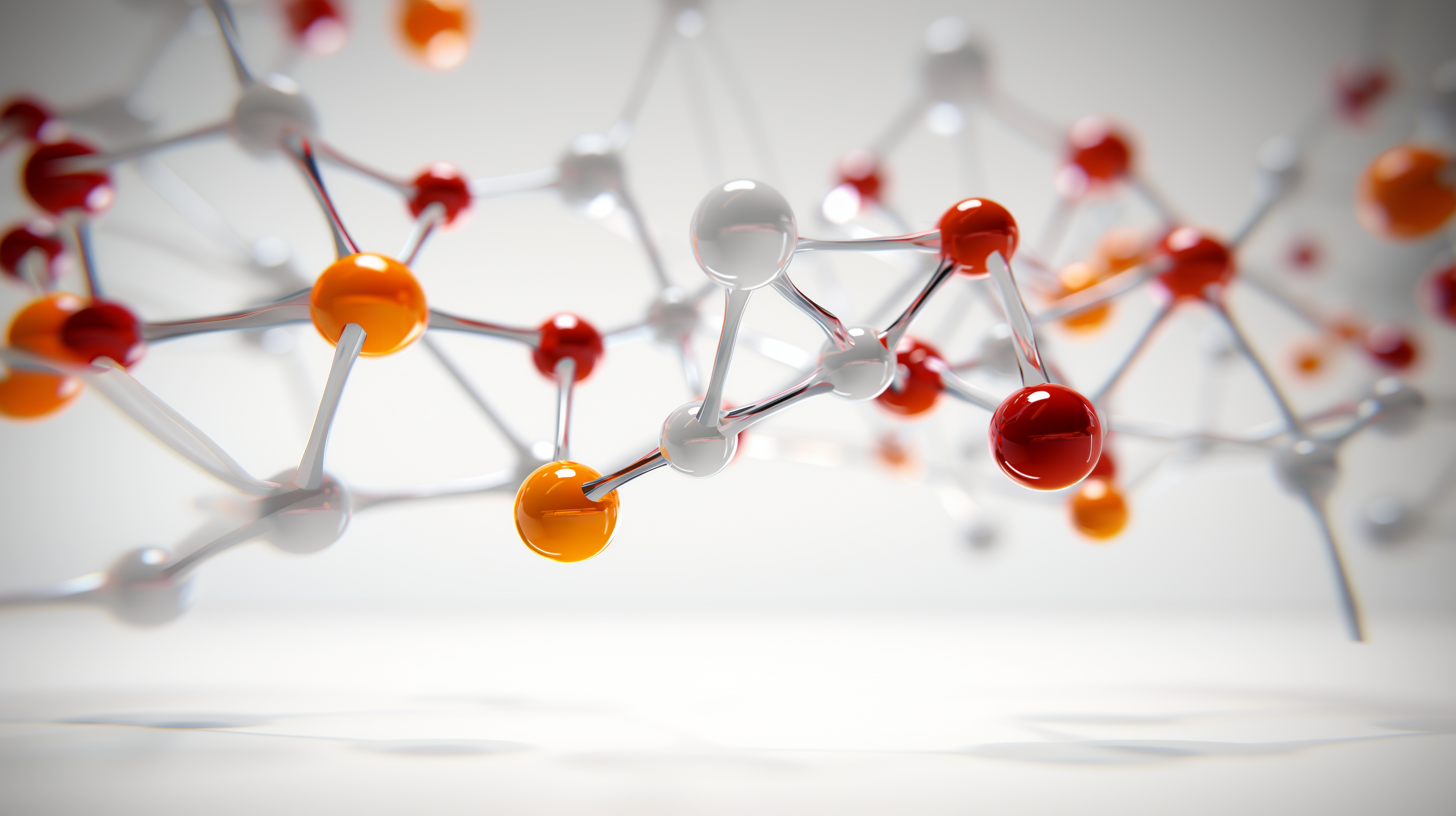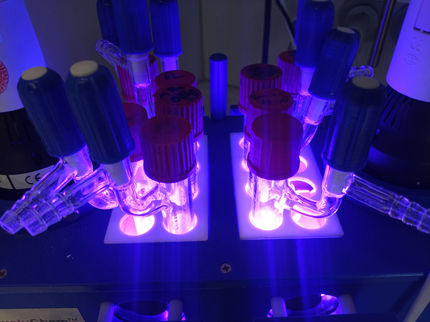On the way to sustainable chemistry? Iron makes it possible
Hydroformylation of olefins using iron catalysis and light
The Hydroformylation of olefins, also known as oxosynthesis, is one of the most important industrial processes in chemistry. Developed in 1938 by Otto Roehlen (Ruhrchemie), more than 10 million tons per year of so-called oxo products are now produced using this process. The main catalysts used are rhodium catalysts, with which olefins can be converted very efficiently into the desired products, albeit at high temperatures (150-200 °C) and pressures (150 to 300 bar hydrogen/carbon monoxide). Rhodium is one of the rarest metals on earth: 1 gram costs around EUR 140. By contrast, ubiquitous iron costs just EUR 120 per tonne, making it around a million times cheaper and also far less toxic.

Iron(III) chloride and light: that's all it takes for the indirect hydroformylation of electron-poor olefins with trioxanes.
© Grafik: Design Prof. Dr. Oliver Reiser, unterstützt durch Microsoft Designer
Researchers at the University of Regensburg have now succeeded in hydroformylating electron-poor olefins at room temperature and atmospheric pressure by combining iron catalysis and light. Inexpensive 1,3,5-trioxane, a trimer of formaldehyde, is used instead of toxic carbon monoxide. The developed process could also be extended to related hydroacylations and hydrocarboxlyations. "There is undoubtedly still a long way to go before this approach can compete with rhodium-catalyzed processes," explains Prof. Dr. Oliver Reiser, Institute of Organic Chemistry at UR, "but the replacement of valuable metals such as rhodium or iridium with readily available alternatives is essential for the development of resource-saving processes on the way to sustainable chemistry."
Photocatalysis, i.e. the use of light for chemical synthesis, is one of the active areas of research in organic chemistry. In order for organic molecules to be effectively stimulated by light, mediating catalysts are used. Precious metals such as ruthenium or iridium - less common than gold - are also predominantly used for this purpose. It has long been assumed that metals such as iron or copper, which are abundant on earth, are less suitable as photocatalysts, as their excited states initiated by light are very short-lived (nanoseconds or even picoseconds) and therefore do not enable reactions with molecules.
Prof. Reiser's research group, supported by the Collaborative Research Center 325 "Assembly Controlled Photocatalysis" funded by the German Research Foundation (DFG), was initially able to use copper and more recently also iron for photocatalysis. The "trick" is that substrates first form a complex with the catalyst molecules, which is split by light in an ultra-fast reaction. The resulting reactive fragments can then trigger chemical reactions. The hydroformylation that has now been developed also follows this principle: light-induced cleavage of an iron-chlorine bond generates chlorine radicals, which subsequently activate the trioxane through hydrogen atom cleavage for the hydroformylation of olefins.
Note: This article has been translated using a computer system without human intervention. LUMITOS offers these automatic translations to present a wider range of current news. Since this article has been translated with automatic translation, it is possible that it contains errors in vocabulary, syntax or grammar. The original article in German can be found here.
Original publication
Other news from the department science
Most read news
More news from our other portals
See the theme worlds for related content
Topic world Synthesis
Chemical synthesis is at the heart of modern chemistry and enables the targeted production of molecules with specific properties. By combining starting materials in defined reaction conditions, chemists can create a wide range of compounds, from simple molecules to complex active ingredients.

Topic world Synthesis
Chemical synthesis is at the heart of modern chemistry and enables the targeted production of molecules with specific properties. By combining starting materials in defined reaction conditions, chemists can create a wide range of compounds, from simple molecules to complex active ingredients.





























































